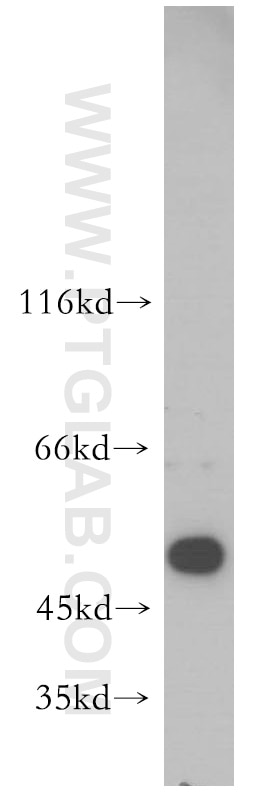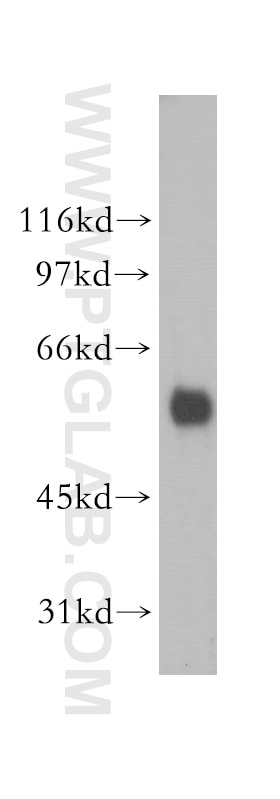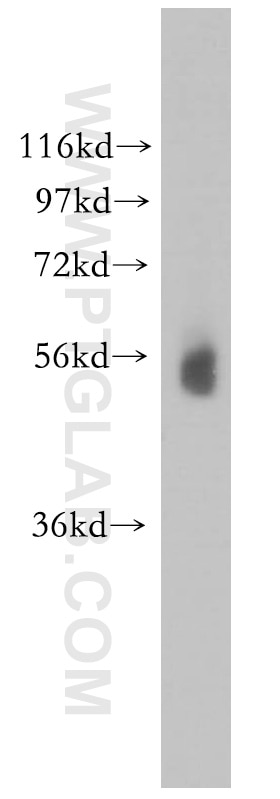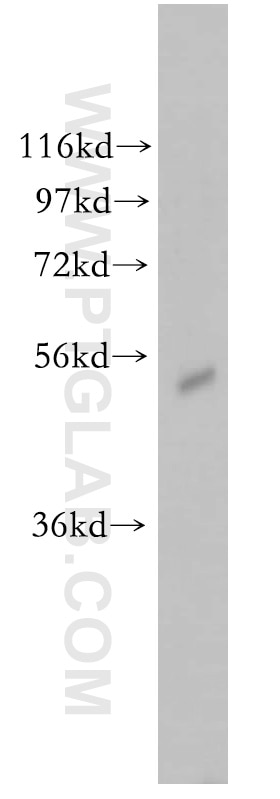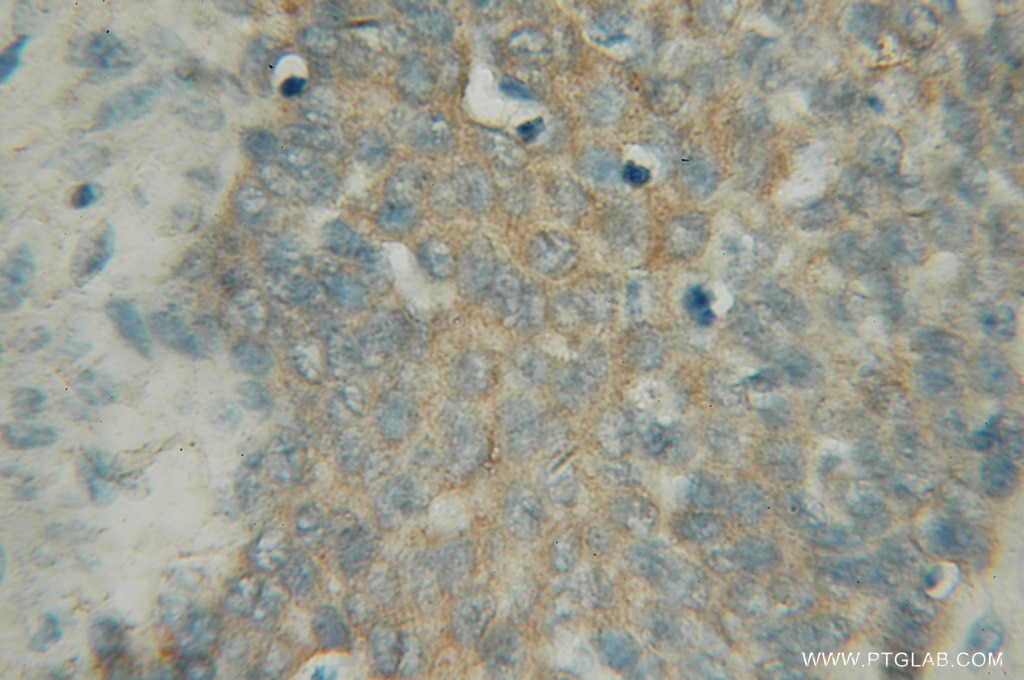PIGB Polyclonal antibody
PIGB Polyclonal Antibody for WB, IHC, ELISA
Host / Isotype
Rabbit / IgG
Reactivity
human, mouse, rat
Applications
WB, IHC, ELISA
Conjugate
Unconjugated
Cat no : 12612-1-AP
Synonyms
Validation Data Gallery
Tested Applications
| Positive WB detected in | human liver tissue, human brain tissue, mouse testis tissue, Raji cells |
| Positive IHC detected in | human prostate cancer tissue Note: suggested antigen retrieval with TE buffer pH 9.0; (*) Alternatively, antigen retrieval may be performed with citrate buffer pH 6.0 |
Recommended dilution
| Application | Dilution |
|---|---|
| Western Blot (WB) | WB : 1:500-1:3000 |
| Immunohistochemistry (IHC) | IHC : 1:20-1:200 |
| It is recommended that this reagent should be titrated in each testing system to obtain optimal results. | |
| Sample-dependent, Check data in validation data gallery. | |
Published Applications
| WB | See 1 publications below |
Product Information
12612-1-AP targets PIGB in WB, IHC, ELISA applications and shows reactivity with human, mouse, rat samples.
| Tested Reactivity | human, mouse, rat |
| Cited Reactivity | human |
| Host / Isotype | Rabbit / IgG |
| Class | Polyclonal |
| Type | Antibody |
| Immunogen | PIGB fusion protein Ag3244 |
| Full Name | phosphatidylinositol glycan anchor biosynthesis, class B |
| Calculated Molecular Weight | 65 kDa |
| Observed Molecular Weight | 50-55 kDa |
| GenBank Accession Number | BC017711 |
| Gene Symbol | PIGB |
| Gene ID (NCBI) | 9488 |
| RRID | AB_2164664 |
| Conjugate | Unconjugated |
| Form | Liquid |
| Purification Method | Antigen affinity purification |
| Storage Buffer | PBS with 0.02% sodium azide and 50% glycerol pH 7.3. |
| Storage Conditions | Store at -20°C. Stable for one year after shipment. Aliquoting is unnecessary for -20oC storage. 20ul sizes contain 0.1% BSA. |
Protocols
| Product Specific Protocols | |
|---|---|
| WB protocol for PIGB antibody 12612-1-AP | Download protocol |
| IHC protocol for PIGB antibody 12612-1-AP | Download protocol |
| Standard Protocols | |
|---|---|
| Click here to view our Standard Protocols |
Publications
| Species | Application | Title |
|---|---|---|
Biochem J Accelerated urokinase-receptor protein turnover triggered by interference with the addition of the glycolipid anchor. |
